Illuminating Nepalese Sukunda
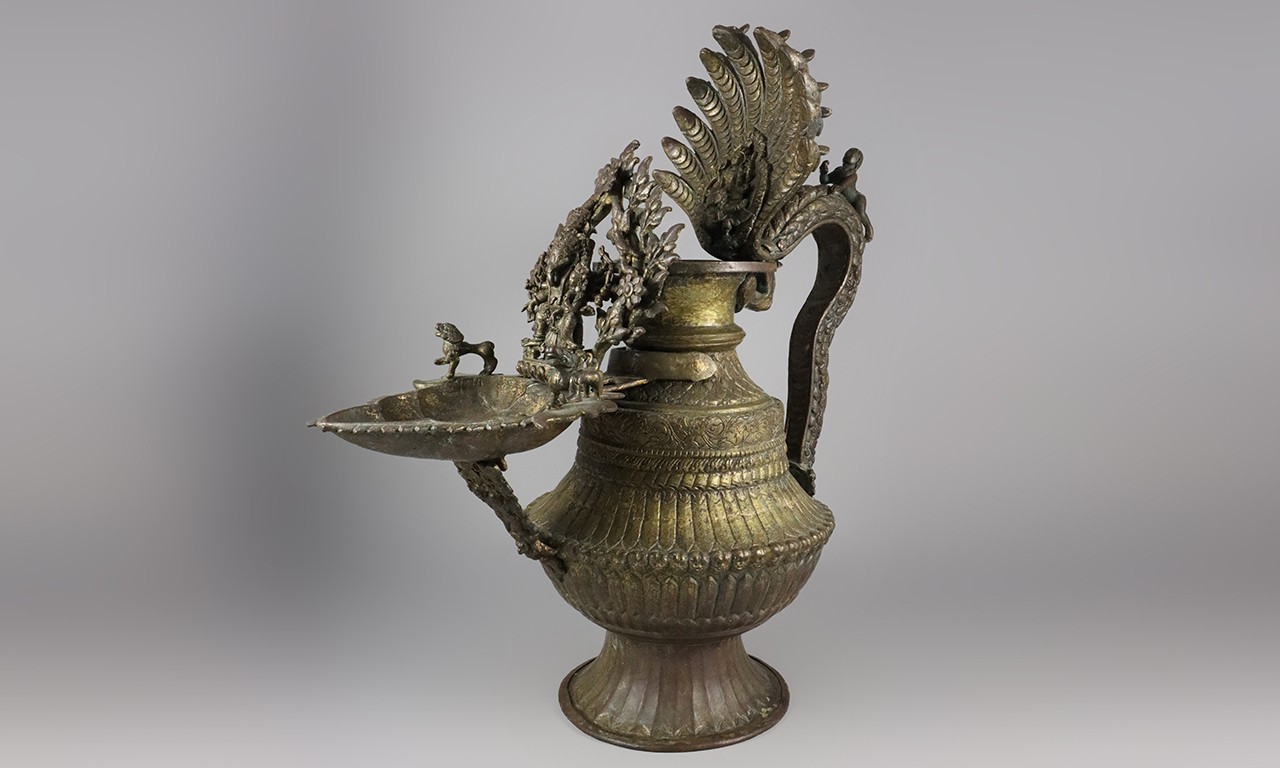 |
| Oil Lamp (Sukunda), early 19th Century Newar culture; Kathmandu Valley, Nepal Brass; 16 1/2 × 7 × 16 in. 2021.8.23 Gift of Anne and Long Shung Shih |
There’s The Rub
The human fear of darkness is without a doubt born of the unpleasantness of our ancestors being devoured in lonely, midnight recesses by animals that formerly held the title of ‘apex predator’ and now make for garish mantlepieces. Given this shared trauma, it is perhaps no coincidence that many religions directly incorporate light into their ritual practices. In the Christian tradition, light is considered godly, and prayers often take the form of lighting a candle for a deceased family member or relevant saint. Light is every bit as important in the rituals of Nepal which has for at least two thousand years been a melting pot for Hinduism and Buddhism. This post looks at a recent Bowers Museum acquisition, a sukunda, a specific form of oil lamp that is used to light the ceremonies of Kathmandu’s Newar culture.
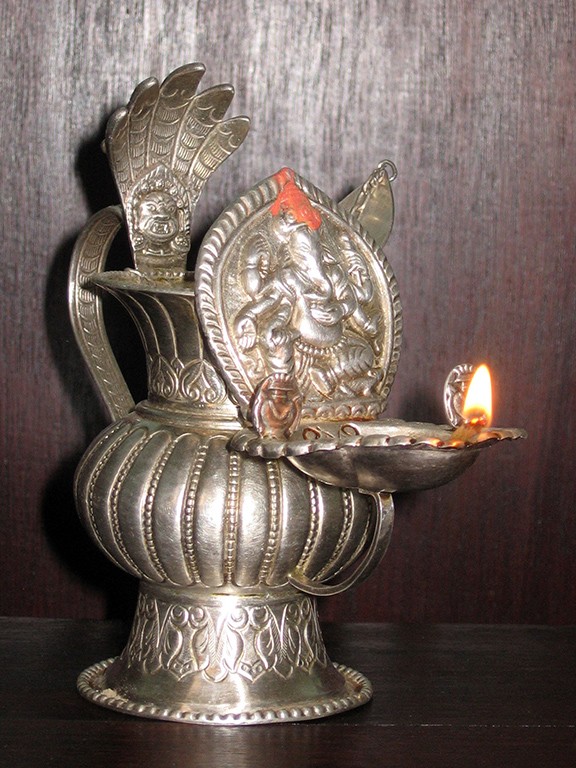 |
| A contemporary Nepalese sukunda with wick lit |
No Matches in Your Area
This sukunda was made from brass by a Newar artist sometime during the early 19th century. Despite its highly refined ornamentation, the object itself was easy to use. The main vessel was filled with mustard seed oil—traditionally one of the major crops of Nepal—and a spoon which was sometimes attached to the oil lamp by a chain would be used to fill the triangular basin (dalupa). To light the lamp, one need only place a wick into the basin and set it aflame. Functioning just like a candle, the heat of the flame causes the oil to evaporate and slows the burning of the wick.
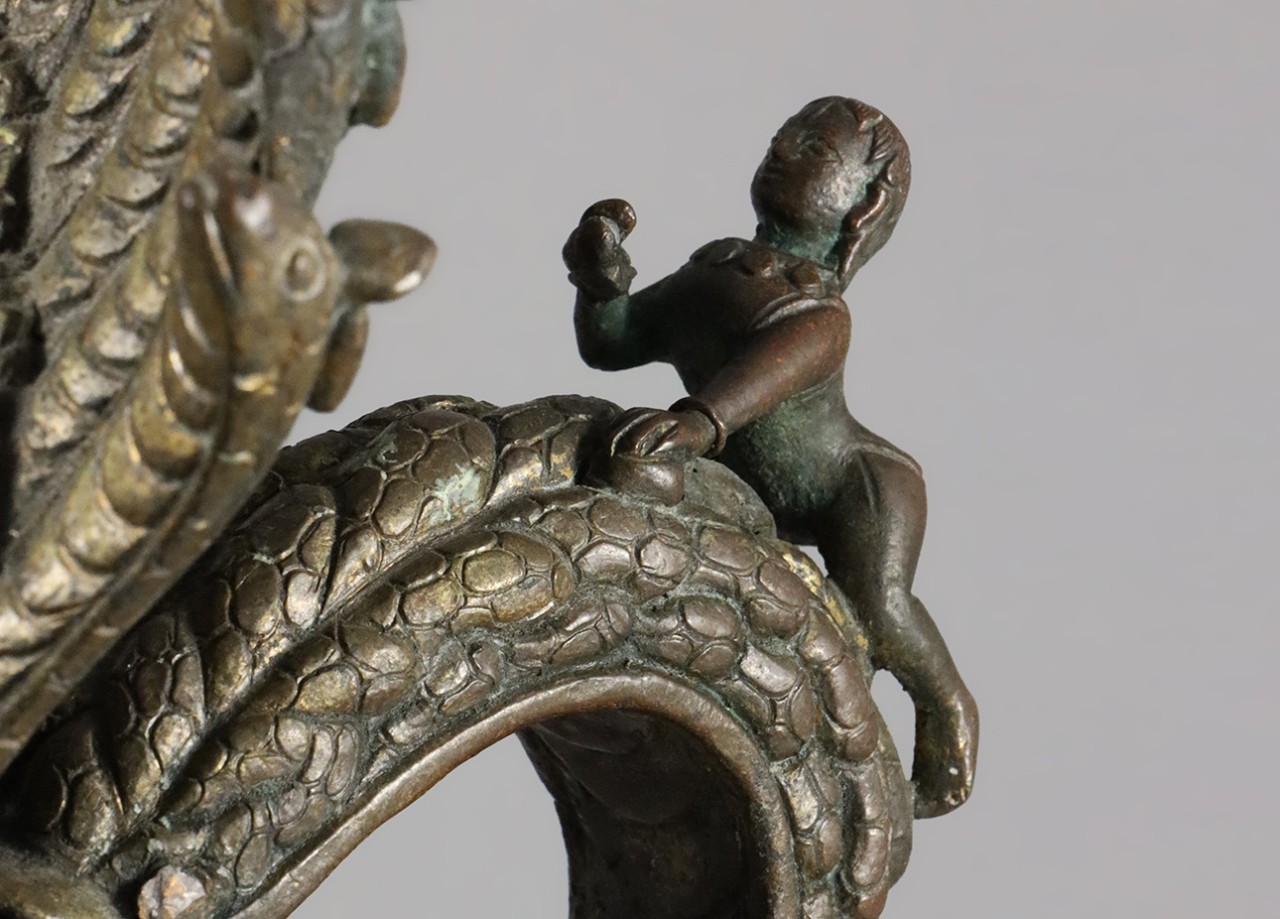 |
| Detail of 2021.8.23 Gift of Anne and Long Shung Shih |
Wick Role
Sukunda are key to many important Newar ceremonies surrounding birth and death. Larger examples like this were commissioned by wealthy families and used in marriage ceremonies. A procession would form at the house of the groom and then travel with lamp lit to the home of the bride and back again after she had joined the procession. Lamps were alternatively used as parts of home altars or in the more complex ritual arrays of monasteries. In the Hindu tradition lamp light serves for literal and symbolic illumination: the light is divine, bringing good fortune to one’s family and protecting against the forces of evil that thrive in darkness.
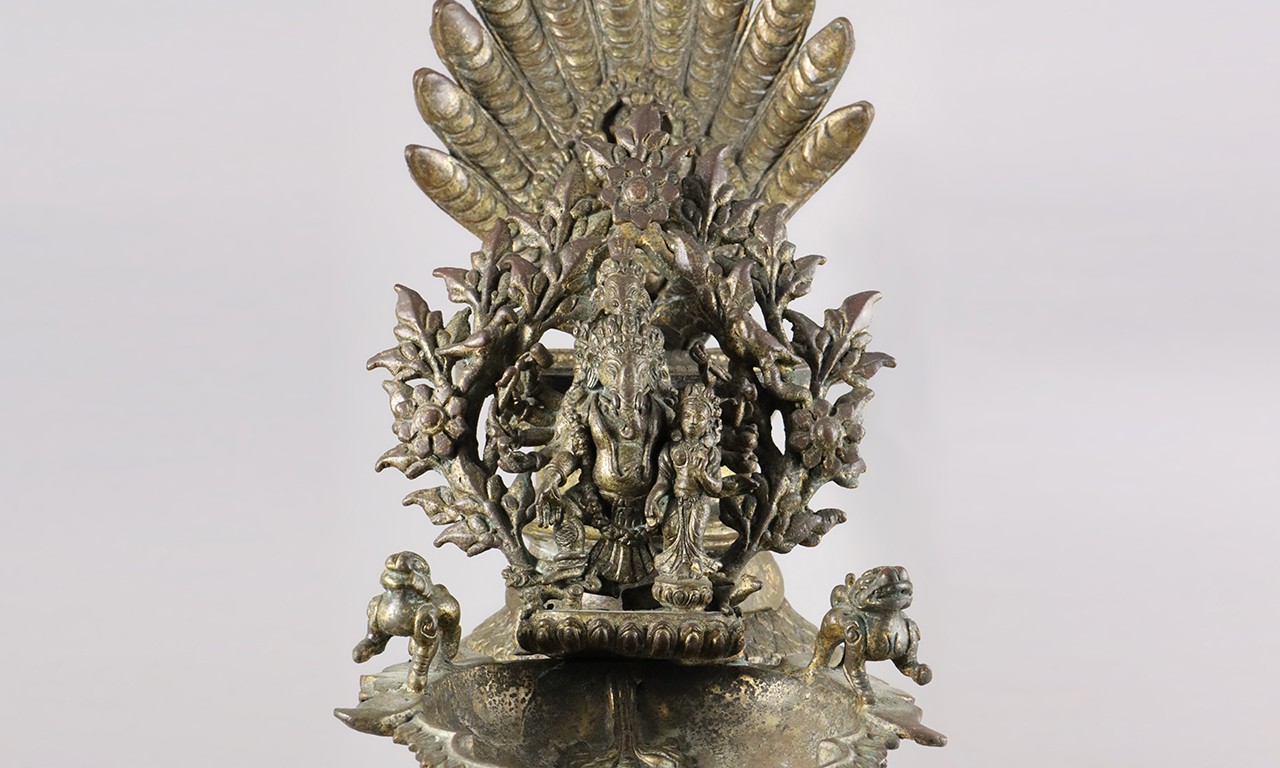 |
| Detail of 2021.8.23 Gift of Anne and Long Shung Shih |
Symb-oil-ism
Both the shape and figures that decorate sukunda are rife with symbolic meaning. Its form is connected to the origin of the Kathmandu Valley which was, millions of years ago, a vast lake said to be the home of many snake gods. This is further evidenced by its name. “Su” translates to beautiful and “kunda” to lake. The handle bends and flares out into an eleven-headed cobra—the Nagaraja, or king of serpents. On its back is the child Krishna, often depicted as he is here crawling on hands and knees. Beneath its many heads is Vishnu, the God of creation and transformation. He wears a tall crown and sits cross legged atop the vahana Garuda, whose outstretched wings form a seat for his passenger. The oil within the vessel symbolizes the lake, and the figures above represent the Gods of change and protection who drained the valley to make it habitable for mankind, denoting the beginning of civilization. The dalupa is headed by a sculpture of the multi-armed Ganesh, bringer of success and new beginnings. Interestingly sukunda are used by both Buddhists and Hindus, with the iconography matching the religion of the owner. This vessel features deities from the Hindu pantheon whereas Avalokiteshvara is commonly depicted as the central figure of Buddhist sukunda.
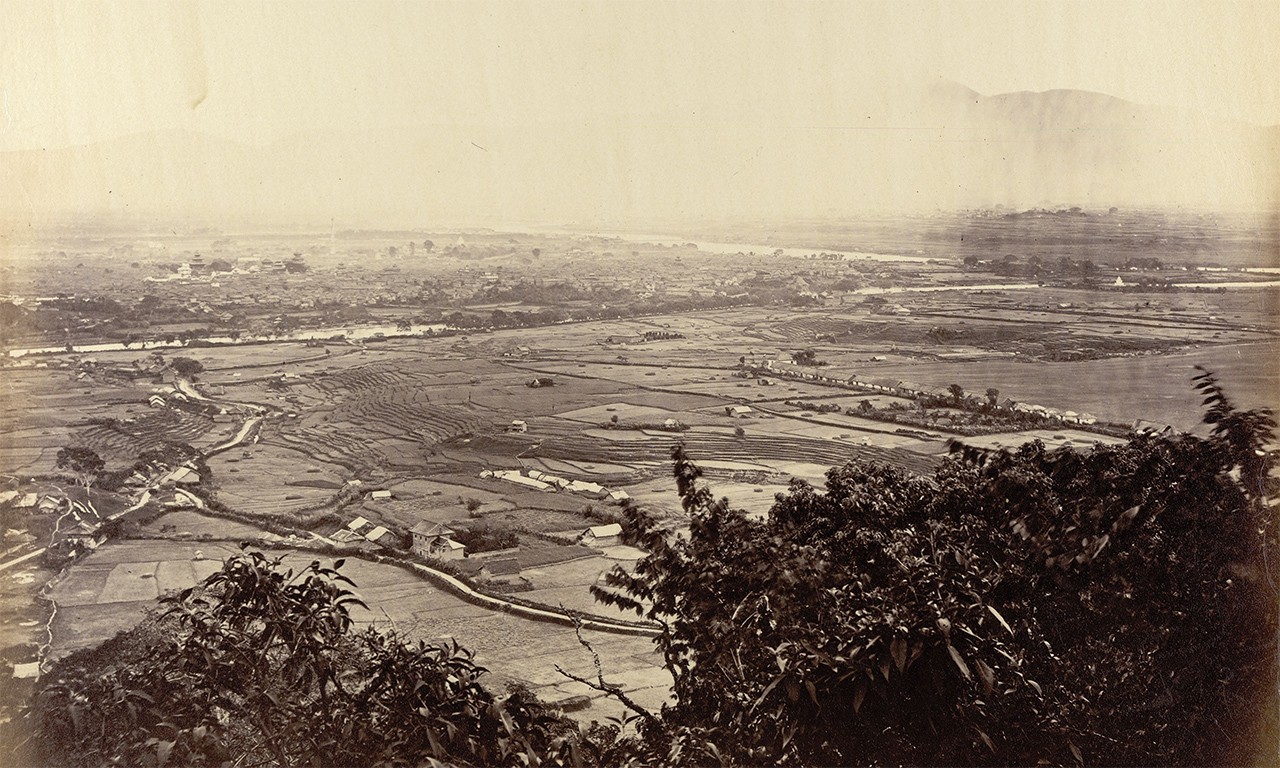 |
| Kathmandu Valley from the hill of the Swayambhunath Stupa, photographed by Clarence Comyn Taylor, 1863 |
On Sukunda Thought
The Kathmandu Valley that sukunda come from has been a major center of production for ritual artifacts since at least the 7th century. There Newar craftsmen cast ritual sculptures that were historically used locally and exported to parts of India and Tibet. Production tends to be rather conservative, evolving little over the course of hundreds of years. Even today Newar sculptors rely on knowledge passed down orally and, in some cases, modern Western art catalogues to replicate the proper proportions and iconography in contemporary sculptures. The lost wax and fire gilding techniques that are employed are also millennia old. To create a sukunda like this a model is made in wax and then encased in clay. The wax is then melted out by pouring molten copper or brass into the mold. After the metal cools, the clay is shattered to reveal the metal beneath. In the case of statuary most pieces are fire gilded, a process which uses small quantities of gold and mercury to create gold coating to pieces, here though the piece has not been gilded.
Text and images may be under copyright. Please contact Collection Department for permission to use. References are available on request. Information subject to change upon further research.
Comments